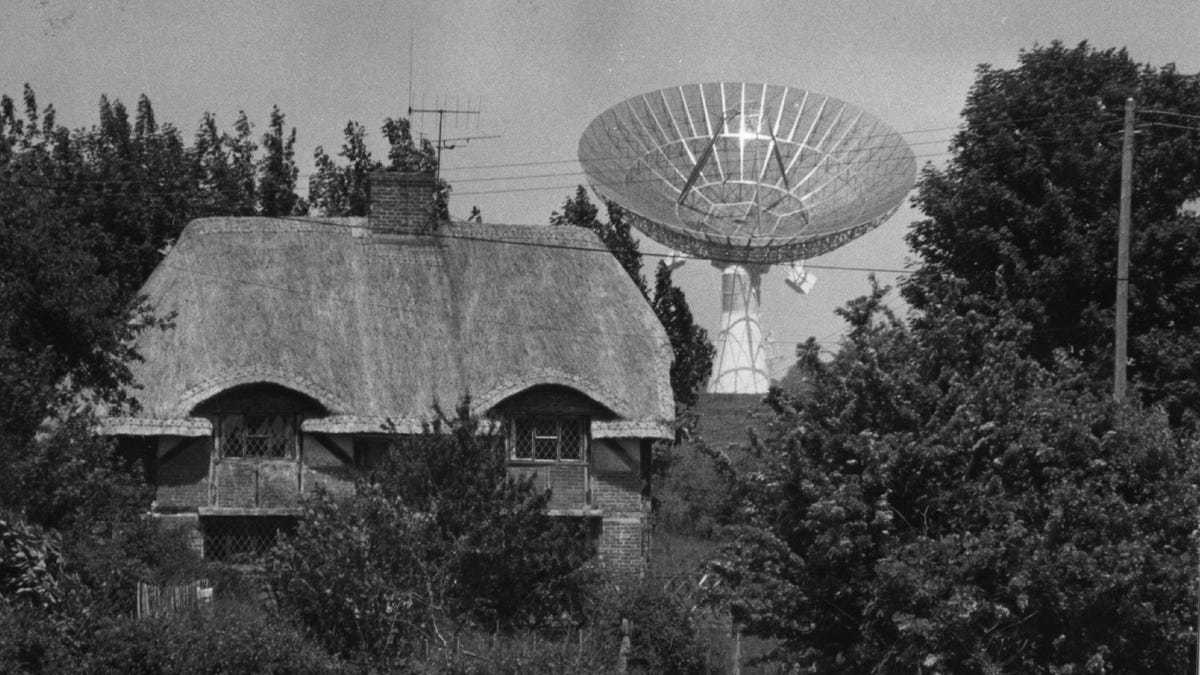When people think of spaceflight’s Apollo era, it’s either a bygone period of relentless exploration or it was completely faked. However, relics from that golden era still haunt the frigid black sea above us. A dead British satellite launched in 1969 is now posing a threat to modern spaceflight. Skynet-1A drifted over 22,300 miles from a graveyard position into an area with active satellite traffic. Gravity didn’t pull the satellite, a ground controller moved it.
Skynet in this context is not an artificial intelligence system set on obliterating humanity, but a series of communications satellites. Skynet-1A was launched into a geostationary orbit hovering over Africa’s east coast to provide a communications link for the British military to stay in contact with its forces deployed across Asia. The satellite didn’t see much use because it stopped working after a few years.
The British expected gravity to pull Skynet-1A out over the Indian Ocean. However, the satellite traveled in the opposite direction to end up over the Pacific Ocean off the coast of Latin America. The new position makes an orbital collision far more likely. This didn’t happen by chance. An expert told the BBC that someone moved Skynet-1A there:
Almost certainly, it was commanded to fire its thrusters in the mid-1970s to take it westwards. The question is who that was and with what authority and purpose?
It’s intriguing that key information about a once vital national security asset can just evaporate. But, fascination aside, you might also reasonably ask why it still matters. After all, we’re talking about some discarded space junk from 50 years ago.
“It’s still relevant because whoever did move Skynet-1A did us few [favors],” says space consultant Dr. Stuart Eves.
“It’s now in what we call a ‘gravity well’ at 105 degrees West longitude, wandering backwards and forwards like a marble at the bottom of a bowl. And unfortunately this brings it close to other satellite traffic on a regular basis.
“Because it’s dead, the risk is it might bump into something, and because it’s ‘our’ satellite we’re still responsible for it,” he explains.
Who moved Skynet-1A? The simple answer is we don’t know. The long answer is it was probably an American. Despite being billed as Britain’s oldest satellite, the device was built by American electronics manufacturer Philco, a then-division of Ford. The satellite was put into orbit on a U.S. Air Force Delta rocket. The USAF made sure Skynet-1A was fully functional before handing it over to the Royal Air Force.
Control of Skynet-1A would occasionally return to the USAF when the British control center at RAF Oakhanger was undergoing maintenance. British experts claim that the incomplete official records indicate that the Skynet-1A was under USAF control when contact was lost in June 1977. Regardless, it’s Britain’s satellite so the former superpower must ensure that its property doesn’t crash into another satellite.
The United States doesn’t need any help in filling orbit with space debris. A satellite built by Boeing exploded last month, littering space with at least 20 pieces of significant debris. These objects have to be tracked because they could hit something else in orbit. If the debris hit something else, the collision would create more debris. Rinse and repeat until Earth is completely cut off from space.


